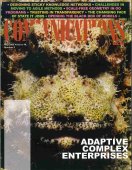Business Types, E-Strategies, and Performance
Of the multitude of dot-coms in existence in the 1990s, only a fraction survived the crash of the e-commerce (EC) market in the summer of 2000. These companies must now rediscover the principles that governed businesses prior to the EC era. Dot-coms must be rebuilt and transformed to face the new economy: not only must they devise innovative e-strategies [1], but they must also restructure around new business models. After such reengineering efforts, some dot-coms have steadily recuperated from the debacle, but many more are still struggling.Little research has compared the performance of companies with different business types, including B2B, B2C, and non-EC, and explored their endeavors to continue after the EC crash. In this article we report the results of our investigation of EC companies in the aftermath of the crash, with particular emphasis on their performance as compared to their counterpart non-EC companies, and in light of their EC operations experience. We also identify e-strategies introduced by different companies and evaluated their effectiveness by correlating them with company performance, and examine whether this strategy-performance relationship is contingent upon business type.Our study adopted a three-stage data collection method. The first stage involved an analysis of the annual reports of 103 companies listed in the Growth Enterprise Market (GEM), which was established by the Stock Exchange of Hong Kong in November 1999. In addition, 16 EC companies with similar histories, reputations, and backgrounds were included. Although GEM imposes no restrictions on the nature of an applicant's business, many of its listed companies come from IT or EC-related fields. Classification of EC and non-EC companies was based on the Dow Jones Internet Index, which classifies firms as EC companies if they derive more than 50% of revenue from EC activities. The latest reports of these 119 companies were thoroughly analyzed to derive financial indices of performance.




